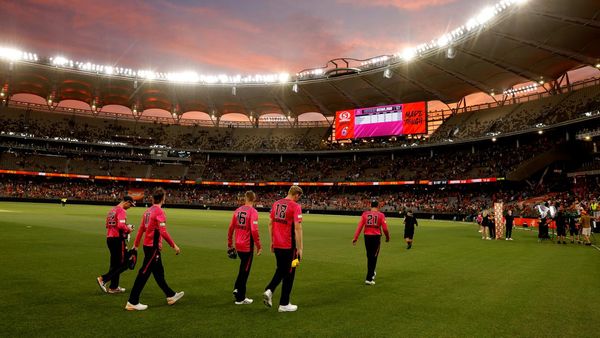
The Fisker Ocean is the first mass-produced electric car made by California-based startup Fisker Inc. And if we know anything about startups, it’s that they sometimes offer exciting products that can exhibit some not-yet-finished vibes.
The Ocean EV is no different. It has an impressive EPA range of 360 miles on a full charge and a cool feature called California Mode that opens all the windows at the press of a button, including the tiny quarter glass and the rear window.
Get Fully Charged
OTA update gives the Fisker Ocean new features
A new software update will bring several new features and improvements to the all-electric Fisker Ocean SUV, but Adaptive Cruise Control is still missing from the release notes, even though customers paid for it.
That said, features like Adaptive Cruise Control aren’t yet available even though customers paid for them. And the latest software update to the Ocean EV carrying version number 2.0, still doesn’t activate ACC, according to the release notes.
Ocean OS 2.0 will be rolled out to all Fisker electric SUVs starting next week as an over-the-air update and brings several improvements, except the activation of radar-guided cruise control.
The headlining feature is the revised torque split between the front and rear wheels for cars fitted with the dual-motor all-wheel drive system. Before version 2.0, the Ocean had a perfect 50:50 torque split between the front and rear wheels. With V2.0, the front will get 45% and the rear will get 55% of the torque.
Fisker says this update improves traction and handling performance, which ultimately makes the all-electric crossover more sporty.
Another new thing is the introduction of Automatic Vehicle Hold (AVH), which replaces the feature known as Hill Hold. AVH will automatically apply the brakes when the vehicle is stationary, and will only release the brakes when the driver presses the accelerator pedal, whereas Hill Hold only maintains brake pressure for about two seconds.
Gallery: 2023 Fisker Ocean







The second braking-related feature brought by the OTA update is called Brake Disk Wiping, which “automatically and imperceptibly” clears water from brake disc surfaces in wet weather, to improve the braking response.
It’s worth noting that the Fisker Ocean is part of a federal preliminary investigation that was started after owners complained about reduced braking performance over uneven or bumpy surfaces. Fisker said the issue–which had to do with the so-called blended braking system–was resolved with software version 1.10 which was rolled out in December 2023. Version 2.0 comes after V1.11.
Here’s the complete list of new features and improvements included in the Ocean OS 2.0 software update, according to Fisker:
- Revised Front / Rear Torque split: In the Fisker Ocean’s dual-motor All-wheel Drive powertrain models (One, Extreme, and Ultra), the power distribution ratio between front and rear wheels is changed from 50:50 to 45:55. This update improves traction and handling performance, making the Ocean even more sporty and dynamic in both Fun and Hyper drive modes.
- Automatic Vehicle Hold: Automatic Vehicle Hold (AVH) replaces the Ocean’s existing Hill Hold feature, increasing vehicle hold time to improve driver ease and comfort. AVH activates brakes when the vehicle is stationary, and only releases brakes when the driver presses the accelerator pedal to begin moving the vehicle. This improvement was driven by customer feedback: the existing Hill Hold was designed to maintain brake pressure for approx. 2 seconds, and AVH now maintains brake pressure until driver is ready to move vehicle.
- SolarSky upgrade: On Extreme and One trims, a new SolarSky energy meter in the Charging/Energy menu on the Central Touchscreen shows how much solar charging is being delivered to the vehicle.
- Trailer Sway Mitigation: This stability control system feature counters trailer sway, making towing safer and more relaxed.
- Brake Disc Wiping: In wet weather, the braking system automatically and imperceptibly clears water from brake disc surfaces, to improve braking response.
- Standby Time controls: Standby Time controls on the Central Touchscreen allow drivers to adjust the amount of time the infotainment system stays in standby mode, reducing battery usage and increasing vehicle range. Drivers may experience longer vehicle boot-up time when Standby Time is reduced, in order to benefit from this reduced power consumption.
- Driver Profiles: Multiple drivers can save their preferences, privacy, and comfort settings in their own user profiles, including climate control and audio settings.
Performance improvements:
- Improved energy management and power retention
- Reduction in state of charge (SoC) loss while parked
- Calibration changes in cabin heating and cooling to improve defogging
- Improved heating/cooling performance in Earth Mode
- OTA updates able to be installed while vehicle is plugged in (note: charging pauses during software update).
- Revised audio tuning for improved bass response on Extreme/One
- Key fob performance enhancements, to improve response
- Improved accuracy in trip metering
- Improved accuracy in energy consumption metering
Last year, Fisker built over 10,000 Ocean EVs but delivered fewer than half as it struggled with its direct sales approach. This year, the California startup wants to switch to a hybrid sales model that will keep the direct sales approach and add traditional dealers with hopes that it will accelerate adoption.







